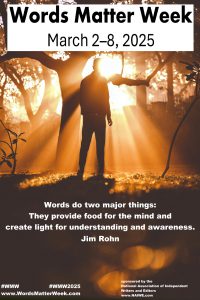Words are a food source that our minds catalyze to encourage new thoughts and new ways of thinking.
Active verbs always engage me, as they show, not tell, me what’s happening to the characters on the page, if it’s fiction, or walk me through a process. They stimulate the imagination, and I can draw a mental image of what the writer describes. Since I read a lot of science fiction and alternate universe stories, this is crucial to visually building the world.
Also key are words that are onomatopoeic — they sound like the object or process they mean. One of my favorite examples is sluice. Saying the word or seeing it in a book lets me hear the water rushing down the tube into the channel below.
I believe active, visual words are the key ingredients to nourishing informative reading.

